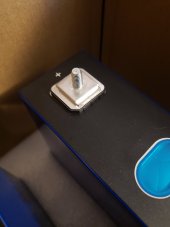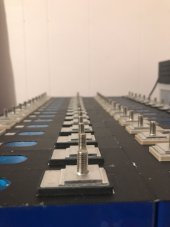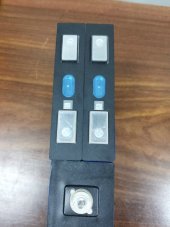Hi All,
I just bought 32 cells, rated 230Ah with the exact same square terminal as shown in the picture from the start of this thread. I bought them from a local reseller (I'm from an Eastern European country). I have reasons to suspect that the reseller buys them in bulk quantities from Docan.
The
Gobel Power QR code decoder says they are all EVE 230Ah cells, manufactured around June 2021, but different days.
I have top-balanced them in parallel at 3.55V for a week, then connected 16 of them in series for a capacity test. Discharged about 230Ah starting from 3.55V until the lowest cell reached 2.50V, at a rate of about 0.25 C, so no problems with the capacity.
However, one thing I noticed, 4 cells out of 32 (that's 2 cells in each 16S battery) do not stay in balance from one day to the next.
CC/CV charging with 0.25 C-rate to 55.80V,
14 cells reach about 3.50V and
2 cells only 3.42V.
The BMS balances them to 0.005 V difference during the CV stage and all seems well until the next day.
But
the next day, the same pattern repeats: 14 cells reach about 3.50V and 2 cells only 3.42V.
Could those 4 cells be defective? High self-discharge rate? Has anyone seen anything similar?
I'm trying to understand what are the risks of continuing to use them as they are. The batteries are used for a solar surplus ESS (Energy Storage System), charged during the day and discharged at night.
So far, none of the cells have exceeded 3.50V during charging (except for the initial top-balancing at 3.55V).





